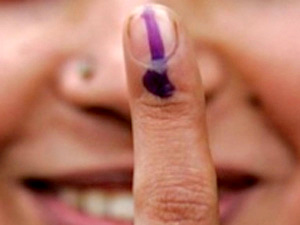Navi Mumbai: Population in Thousands, Voter Count in Hundreds in New CIDCO Nodes
By Amit Srivastava | Updated: April 29, 2024 19:04 IST2024-04-29T19:02:49+5:302024-04-29T19:04:57+5:30
With just two weeks remaining until the polling for Maval Lok Sabha constituency seat, some areas in Navi Mumbai ...

Navi Mumbai: Population in Thousands, Voter Count in Hundreds in New CIDCO Nodes
With just two weeks remaining until the polling for Maval Lok Sabha constituency seat, some areas in Navi Mumbai have witnessed minimal or even no campaigning from political parties. This lack of attention stems from parties perceiving these regions as having minimal impact on eventual result as the voter count is extremely low, even though the populace is huge. The newly developed nodes under CIDCO's jurisdiction, including Karanjade, Dronagiri, Ulwe, Taloja, and Roadpali, have fewer registered voters. As these nodes are still in development stage, many residents either haven't registered on the voter lists or are registered in other areas, leading to a significantly low number of voters.
Take Taloja and Karanjade for instance where the population is over 10000, the number of registered voters is just aaround 7000. Similarly, Ulwe and Dronagiri have just about 2000 to 3000 voters each. Neighbouring villages, in contrast, have a more substantial voter presence and therefore get much more attention from the politicians. Few road shows, lasting no more than half an hour, and virtually no door-to-door campaigning has been observed, leaving residents feeling overlooked and disenfranchised. The inadequacy of basic infrastructure in these areas is glaring, ranging from the absence of gardens and educational institutions to the lack of a good hospital. Rameshwar Angre, a former Sarpanch of Karanjade, highlighted the persistent water scarcity issue faced by both the newly developed node and the adjoining village throughout the year. Additionally, Angre noted the deficient road network and sewage system, as the challenges faced by residents. “For any small work, we have to visit the CIDCO office who do the work as per the choice. In the last 10 years, the sitting MP has not visited even once,” said Angre.
Despite a population exceeding 100,000, the area lacks essential amenities such as gardens or playgrounds for children. Sonal Nalawade, a resident of Karanjade, expressed disappointment in the lackluster election campaign efforts, noting that the few road shows lasted a mere 30 minutes and door-to-door campaigning was virtually non-existent. In Taloja, where the population exceeds 100,000, frustration with inadequate infrastructure, particularly regarding water problems, has led many residents to consider boycotting the upcoming elections. Despite the significant population size, voter turnout remains dismally low, with only 7200 registered voters. Apart from water problems, they have persistent problems with air pollution from the Taloja industrial area. Like other nodes, the problem of gardens, open space, play ground and educational institutions. Diksha Jadhav, a social worker residing in Phase 1 of Taloja, highlights the challenges faced by residents, including difficulties in venturing out in the evenings due to air pollution. In addition to the persistent water issues, Jadhav points out the absence of any gardens or playgrounds in Taloja. Although some roads have been recently repaired, many others remain in a deplorable condition, adding to the overall woes of the community. Furthermore, the node lacks a college or even reputable government educational institutions, further limiting educational opportunities for residents.
Similarly, the newly developed node of Ulwe, which recently gained connectivity with Mumbai through the Atal Setu (Mumbai Trans Harbour Link), lacks a college or educational institutions. "There is a Zila Parishad school, and residents are forced to rely on private schools with high fee structures," remarked Rajeev Mishra, a civic activist. The population of Ulwe node is around 50,000 but the number of registered voters in the colony area is hardly 2500 to 3000. Ulwe node faces the inconvenience of not having a petrol pump, requiring motorists to travel around 5 km to Belapur for refueling. Similarly, in Ulwe, there is only a primary health center managed by CIDCO. However, even this facility has limited resources for child vaccination. In the event of requiring immediate medical attention, residents have to travel to Belapur or Vashi. This shortage of medical facilities is mirrored in Dronagiri and Karanjade as well.
Shahid Khan, a resident, laments the lack of representation for those residing in the CIDCO area of Ulwe. "Even when politicians visit Ulwe, they prefer to focus on the adjoining villages, not the colony areas," he observed. Dronagiri is not an exception, as it does not have even a good private school. So far, there has been minimal engagement in election campaigning in these areas. Only one motorbike rally, led by MahaYuti candidate Shrirang Barne, covered a small area of the node. Shockingly, many residents are not even aware of the names of the candidates contesting the election. Deepak Sharma, a resident of Ulwe, began inquiring about the candidates of different political parties only after learning about his polling station details. He is not alone in this; another resident, Kajal Singh, who updated her name in the voter list around four years ago, has now forgotten the details. Despite her efforts to contact local representatives of the Tehsil office or any political parties for information, she was unsuccessful. Finally, she resorted to searching on Google and found all the details she needed through the Election Commission website.
Open in app